Introduction
June in USDA Hardiness Zone 10 presents an extraordinary opportunity for gardeners. While many regions across the country begin to wilt under summer heat, Zone 10’s unique climate allows for vibrant growth and diverse planting options. With average temperatures ranging from 70°F to 100°F, this warm subtropical zone creates ideal conditions for heat-loving plants to thrive.
This comprehensive guide will walk you through the best vegetables, flowers, herbs, and landscape plants to grow in June in Zone 10, with practical advice on planting techniques, growth requirements, and care tips to ensure your garden flourishes throughout the summer months and beyond.
Vegetables To Plant in June
The warm June temperatures in Zone 10 create perfect conditions for growing a variety of vegetables. Here are ten excellent options that will thrive in your summer garden:
1. Tomatoes

Temperature Tolerance: 70°F to 85°F (can endure up to 95°F with adequate watering)
Planting Dates: Mid-February through June
Tomatoes are quintessential summer vegetables that love the warm weather Zone 10 provides. For best results:
- Choose heat-resistant varieties like ‘Solar Fire’, ‘Heatwave II’, or ‘Sun Master’ for Zone 10’s summer temperatures
- Plant in full sun, spacing plants 18-24 inches apart for proper air circulation
- Install support systems (stakes or cages) at planting time to avoid root damage later
- Water deeply at the soil level, avoiding foliage to prevent disease
- Apply a 2-3 inch layer of organic mulch to maintain soil moisture and temperature
- Monitor for pests like aphids, whiteflies, and tomato hornworms regularly
Pro Tip: For late-season planting in June, select early-maturing varieties (60-70 days) to ensure a harvest before fall temperatures arrive.
2. Peppers
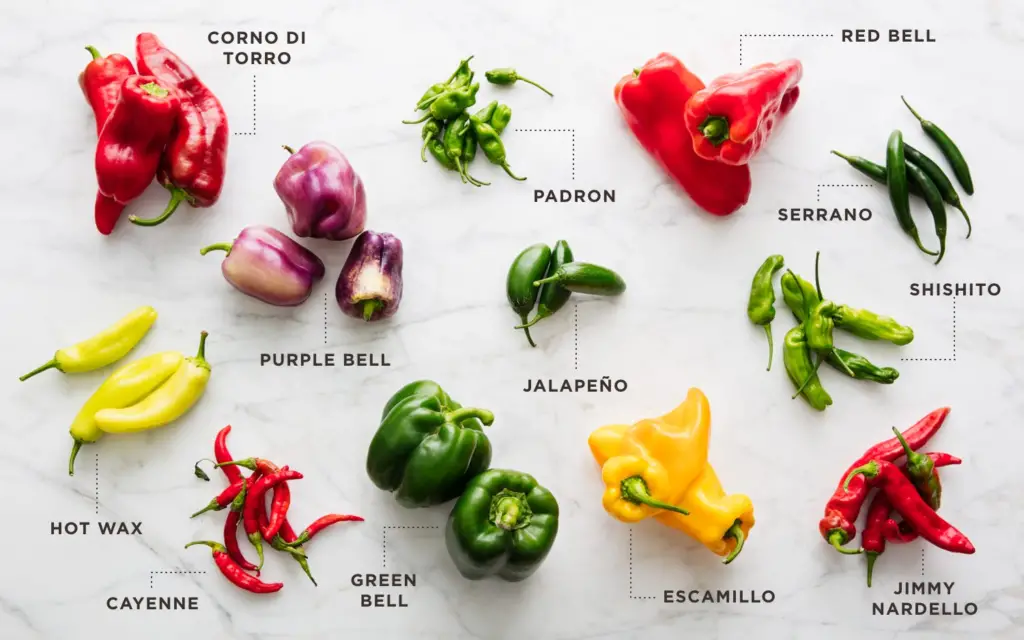
Temperature Tolerance: 70°F to 90°F
Planting Dates: Late March to June (when soil temperature reaches 65°F)
Peppers thrive in Zone 10’s summer heat, offering varieties from sweet bells to fiery hot peppers:
- Space plants 18-24 inches apart in nutrient-rich, well-draining soil
- Provide consistent moisture, particularly during fruit development
- Side-dress with compost or balanced organic fertilizer when flowering begins
- Consider afternoon shade in the hottest locations to prevent sunscald on fruits
- Harvest sweet peppers when they reach full size but are still firm; hot peppers can be harvested at any stage depending on desired heat level
Recommended Varieties: ‘California Wonder’ (bell), ‘Anaheim’ (mild), ‘Early Jalapeño’ (medium heat), and ‘Thai Bird’ (very hot) all perform well in Zone 10’s summer conditions.
3. Cucumbers
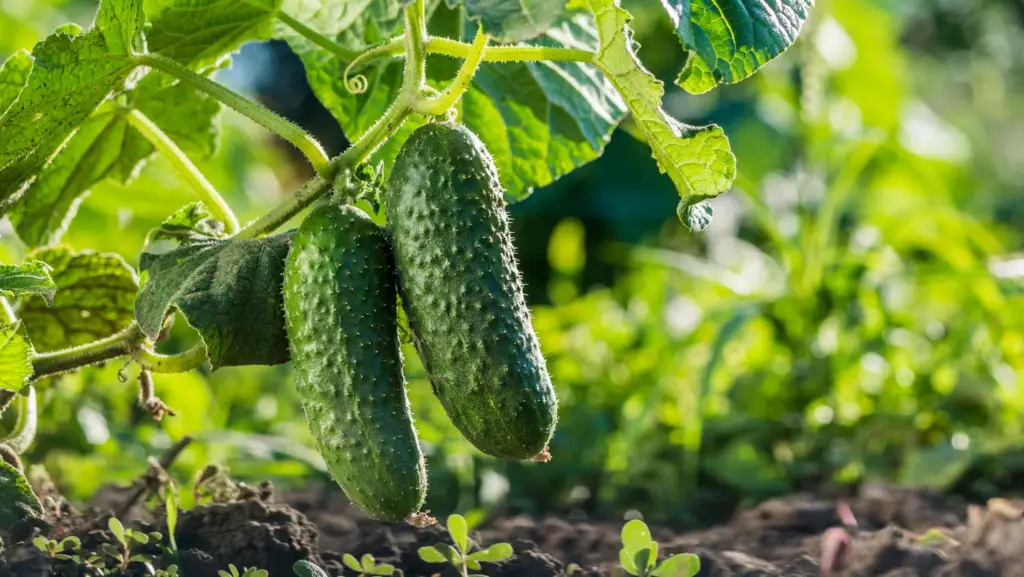
Temperature Tolerance: 70°F to 95°F
Planting Dates: Late March until mid-June
Cucumbers grow rapidly in warm weather, making them perfect for June planting:
- Direct sow seeds 1 inch deep and 2-3 feet apart
- Train vines on trellises to save space and improve air circulation
- Water deeply and consistently (1-2 inches per week) to prevent bitter-tasting fruits
- Harvest frequently when cucumbers are still young and tender (generally 6-8 inches long for slicing varieties, 3-4 inches for pickling types)
- Choose heat-tolerant varieties like ‘Armenian’, ‘Beit Alpha’, or ‘Suyo Long’ for summer planting
Companion Plants: Grow alongside sunflowers, corn, or trellised beans for natural shade during the hottest part of the day.
4. Squash
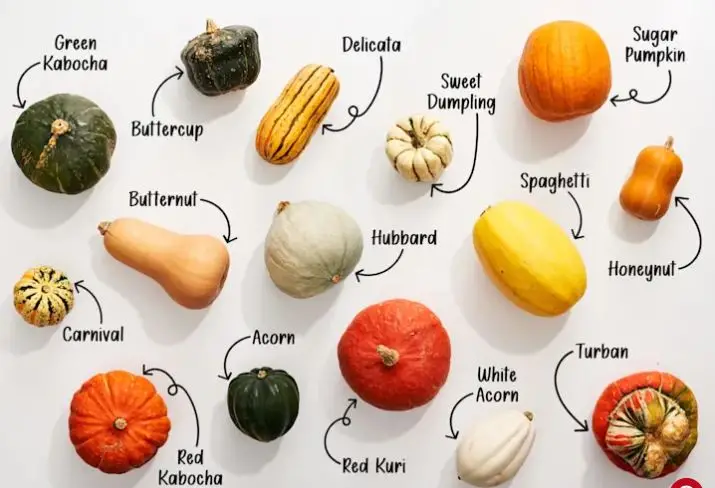
Temperature Tolerance: 70°F to 95°F
Planting Dates: March through June
Both summer and winter squash varieties thrive in Zone 10’s June heat:
- Create planting mounds enriched with compost, spacing 3-4 feet apart
- Plant 4-5 seeds per mound, thinning to the strongest 2-3 seedlings
- Water deeply at the base of plants, avoiding foliage
- Monitor for squash vine borers and squash bugs, which are common in warm weather
- Harvest summer squash (zucchini, yellow squash) when young and tender
- Allow winter squash (butternut, acorn, spaghetti) to fully mature on the vine until the skin hardens
Pollination Tip: Plant flowering herbs or annuals nearby to attract pollinators, ensuring better fruit set.
5. Beans
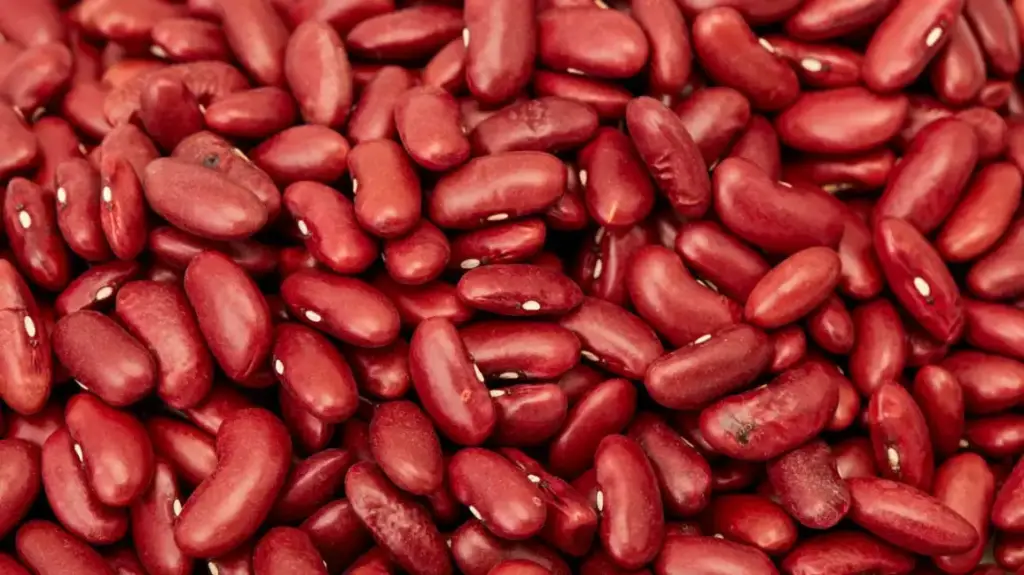
Temperature Tolerance: 70°F to 90°F
Planting Dates: Late March to June
Beans are fast-growing, nitrogen-fixing plants perfect for summer gardens:
- Direct sow seeds 1 inch deep, 2-4 inches apart
- Provide trellises for pole varieties or space bush varieties 18-24 inches apart
- Water consistently, especially during flowering and pod development
- Succession plant every 2-3 weeks for continuous harvests
- Choose heat-tolerant varieties like ‘Contender’, ‘Provider’ (bush) or ‘Kentucky Wonder’, ‘Rattlesnake’ (pole)
Nutritional Benefit: Beyond their delicious flavor, beans enrich your soil with nitrogen that benefits future plantings.
6. Eggplant
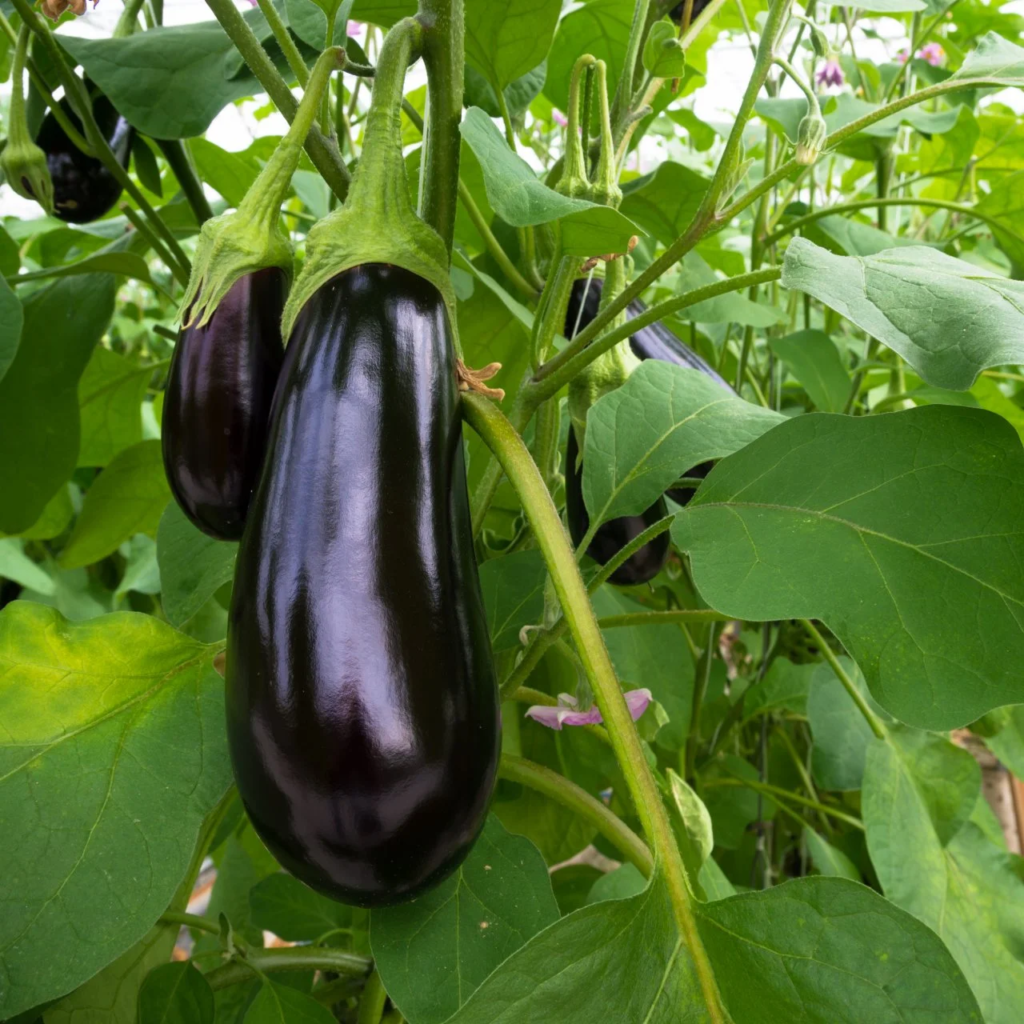
Temperature Tolerance: 75°F to 85°F
Planting Dates: Late March to June
Eggplants are heat-loving vegetables that thrive in Zone 10’s summer conditions:
- Space plants 18-30 inches apart in fertile, well-draining soil
- Support larger varieties with stakes to prevent stem breakage
- Water deeply and consistently, maintaining even soil moisture
- Apply a balanced fertilizer every 4-6 weeks during the growing season
- Harvest when fruits are glossy and firm, before seeds develop and flesh becomes bitter
Variety Recommendation: Try ‘Black Beauty’ for classic large fruits, ‘Fairy Tale’ for compact plants with striped fruits, or ‘Thai Long Green’ for something unique.
7. Okra
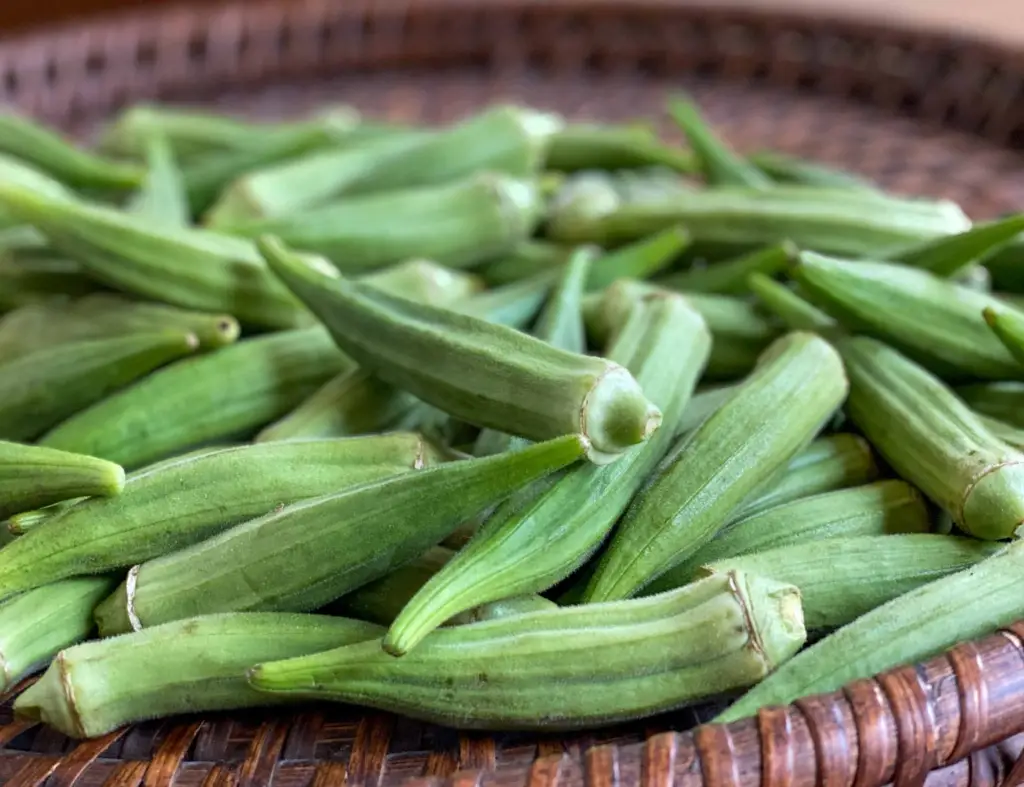
Temperature Tolerance: 75°F to 100°F
Planting Dates: Late April to June
Okra thrives in Zone 10’s hottest conditions, making it perfect for June planting:
- Soak seeds overnight before planting to improve germination
- Direct sow 1 inch deep and 12-18 inches apart
- Thin seedlings to 18-24 inches apart when they reach 3 inches tall
- Water moderately; established okra is surprisingly drought-tolerant
- Harvest pods when they’re 2-4 inches long (usually 3-5 days after flowering) for tender texture
Harvesting Tip: Wear gloves when harvesting to protect against the plant’s small spines, and harvest frequently (every 1-2 days) during peak production.
8. Sweet Corn
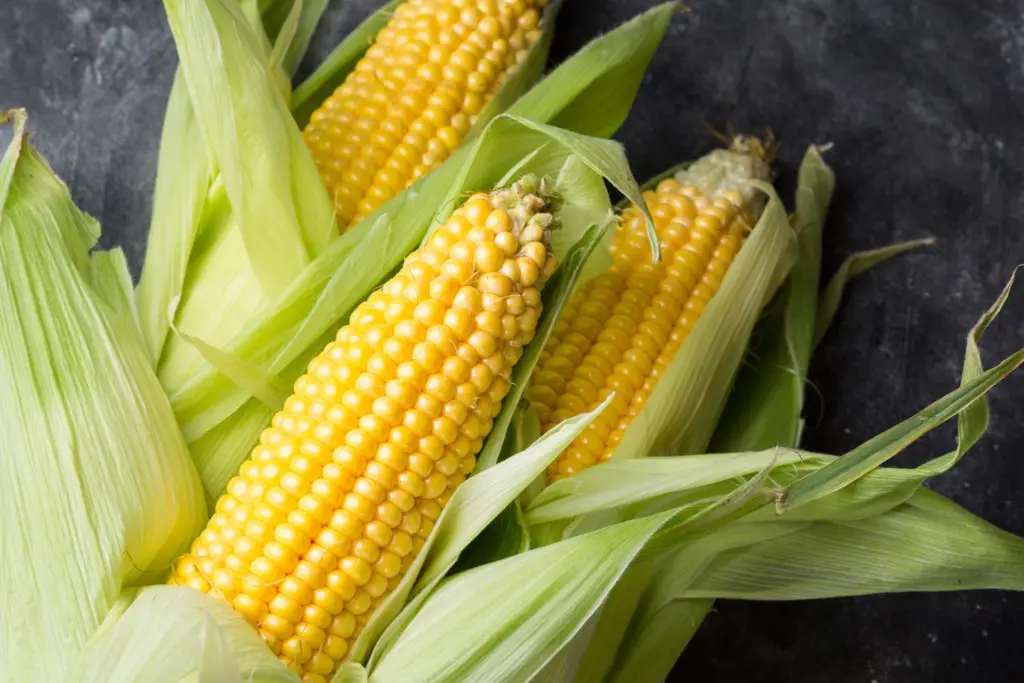
Temperature Tolerance: 70°F to 95°F (optimal soil temperature above 60°F)
Planting Dates: Mid-March through June
Sweet corn grows quickly in Zone 10’s summer heat:
- Plant in blocks of at least 4 rows to ensure proper wind pollination
- Space seeds 6-8 inches apart in rows 30-36 inches apart
- Water deeply (1-2 inches per week), especially during tasseling and silk development
- Side-dress with nitrogen-rich fertilizer when plants are knee-high
- Harvest when silks are brown and kernels produce a milky liquid when punctured
Variety Selection: Choose “supersweet” or “sugary enhanced” varieties for better heat tolerance and longer harvest window in Zone 10.
9. Beets
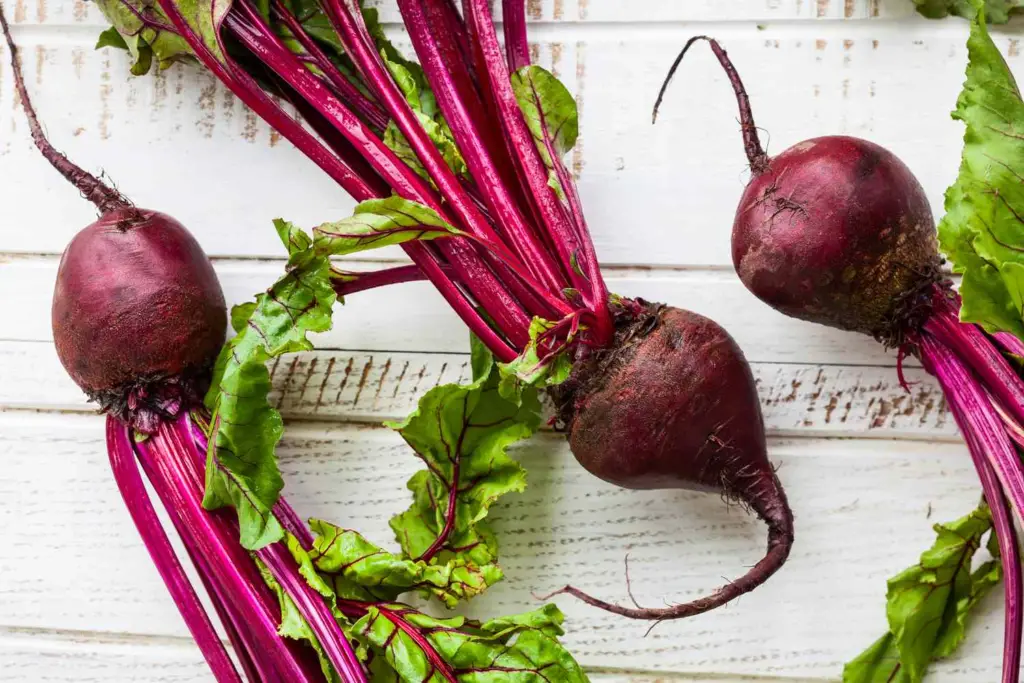
Temperature Tolerance: 60°F to 70°F (can tolerate warmer temperatures with proper care)
Planting Dates: Late February through June
While beets prefer cooler temperatures, they can be grown successfully in June in Zone 10:
- Direct sow seeds ½ inch deep and 1-3 inches apart
- Thin seedlings to 3-4 inches apart when they reach 2 inches tall
- Provide partial afternoon shade in the hottest locations
- Keep soil consistently moist to prevent woody texture
- Harvest when roots reach 1-3 inches in diameter for best flavor and texture
Dual-Purpose Plant: Don’t discard the thinnings or tops—beet greens are nutritious and delicious when sautéed like spinach.
10. Kale

Temperature Tolerance: 60°F to 75°F (can tolerate up to 80°F)
Planting Dates: Early fall through late spring, including June
While typically considered a cool-season crop, heat-tolerant kale varieties can be planted in June:
- Choose heat-resistant varieties like ‘Lacinato’ (Dinosaur), ‘Red Russian’, or ‘Siberian’
- Plant in areas that receive morning sun and afternoon shade
- Space plants 12-18 inches apart in fertile, well-draining soil
- Water consistently and mulch heavily to keep soil cool
- Harvest outer leaves regularly, allowing the center to continue producing
Summer Kale Tip: Provide shade cloth or plant on the north side of taller crops to reduce heat stress and extend the growing season.
Flowers To Plant in June
Brighten your Zone 10 garden with these heat-loving flowers that thrive when planted in June:
1. Zinnias
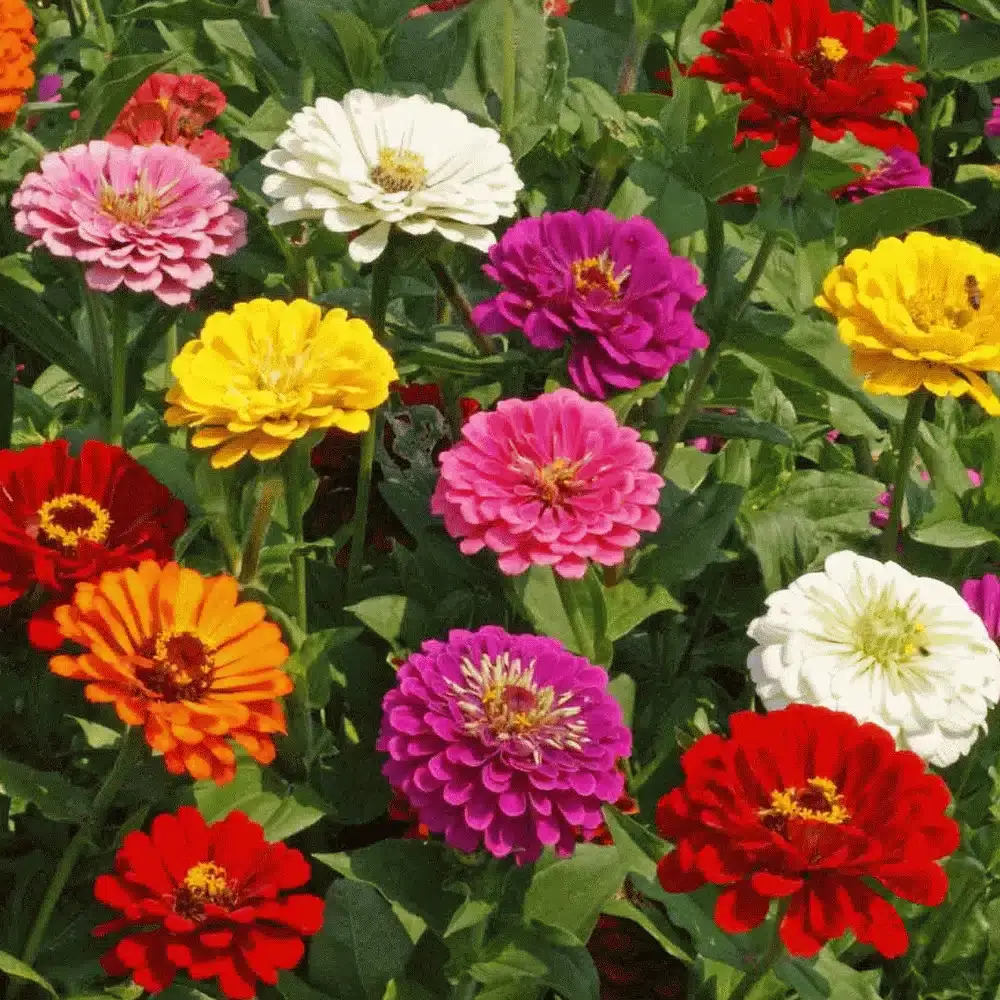
Temperature Tolerance: 70°F to 90°F
Planting Dates: March to June
Zinnias are summer garden superstars with vibrant colors and excellent cut flower potential:
- Direct sow seeds ¼ inch deep and 6-12 inches apart depending on variety
- Choose from compact varieties (12-18 inches) to giants (3-4 feet tall)
- Provide full sun and moderate water, allowing soil to dry between waterings
- Deadhead regularly to encourage continuous blooming until fall
- Look for heat-resistant varieties like the ‘Profusion’ and ‘Zahara’ series
Butterfly Magnet: Few summer flowers attract as many butterflies and pollinators as zinnias, making them valuable for supporting local ecosystems.
2. Marigolds
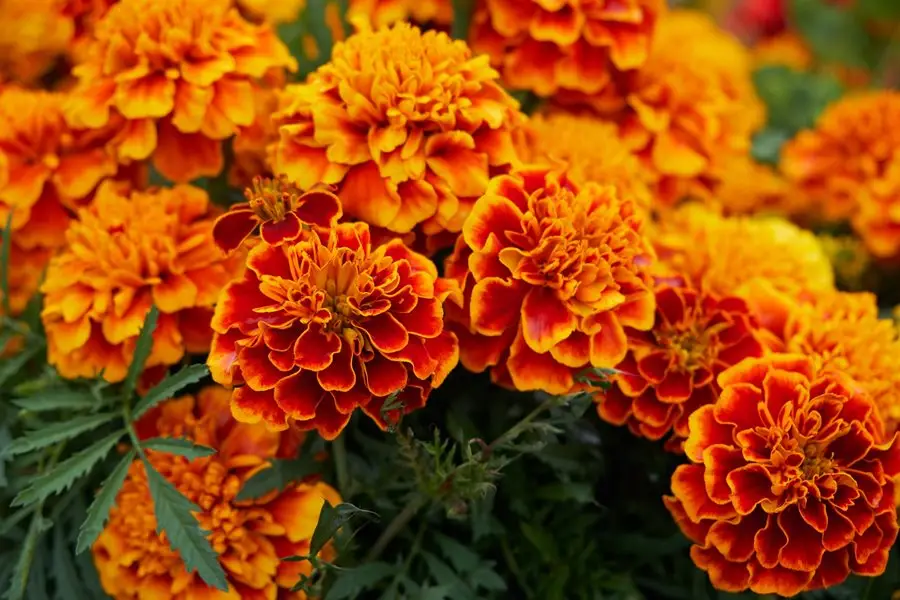
Temperature Tolerance: 70°F to 90°F
Planting Dates: March to June
These cheerful flowers thrive in summer heat and provide excellent pest protection:
- Space dwarf varieties 6-9 inches apart and tall varieties 12-18 inches apart
- Plant in full sun in well-draining soil
- Allow soil to dry slightly between waterings
- Pinch young plants to encourage bushy growth
- Choose African marigolds (Tagetes erecta) for large blooms or French marigolds (Tagetes patula) for abundant smaller flowers
Garden Benefit: Marigolds repel nematodes and many garden pests, making them excellent companion plants for vegetables.
3. Sunflowers

Temperature Tolerance: 70°F to 95°F
Planting Dates: March through June
These iconic summer flowers create dramatic height and color in the garden:
- Direct sow seeds 1-2 inches deep, spacing according to variety (dwarf types 6 inches apart; giant types 24-36 inches apart)
- Choose from varieties ranging from 1-foot dwarfs to 12-foot giants
- Plant where they won’t shade other sun-loving plants
- Water deeply but infrequently once established
- Consider pollenless varieties for cut flowers that won’t shed on tabletops
Wildlife Value: Sunflowers attract beneficial insects during blooming and birds when seeds mature, supporting biodiversity in your garden.
4. Lantana

Temperature Tolerance: 75°F to 100°F
Planting Dates: March to June
This heat-loving perennial provides non-stop color throughout summer and fall:
- Space plants 2-3 feet apart (they grow quickly in warm weather)
- Plant in full sun and well-draining soil
- Water moderately; established lantana is quite drought-tolerant
- Choose varieties like ‘Bandana’, ‘Landmark’, or ‘Luscious’ series for compact growth and abundant blooms
- Allow to dry between waterings for best flowering
Caution: While beautiful, lantana berries are toxic if ingested, so consider placement if you have small children or pets.
5. Bougainvillea

Temperature Tolerance: 70°F to 100°F
Planting Dates: Late April to June
This spectacular flowering vine or shrub creates dramatic color in Zone 10 landscapes:
- Plant in full sun and well-draining soil
- Space 5-6 feet apart for wall or fence coverage
- Water deeply but infrequently; overwatering reduces flowering
- Provide strong support for climbing varieties
- Prune after flowering cycles to control size and shape
Color Selection: Beyond the common magenta, look for varieties in white, gold, orange, pink, or even bicolors for unique garden displays.
6. Plumbago
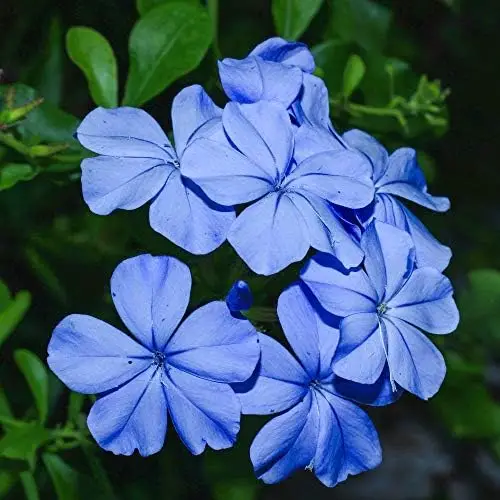
Temperature Tolerance: 70°F to 100°F
Planting Dates: June is ideal
This sprawling shrub produces clusters of sky-blue flowers throughout the warm season:
- Space plants 3-4 feet apart to allow for spreading growth
- Plant in full sun to light shade in well-draining soil
- Water regularly when establishing, then reduce once established
- Use as informal hedges, groundcovers, or trailing plants in containers
- Prune lightly after flowering cycles to maintain shape
Low-Maintenance Choice: Plumbago is remarkably pest-resistant and requires minimal care once established, making it perfect for busy gardeners.
7. Salvia
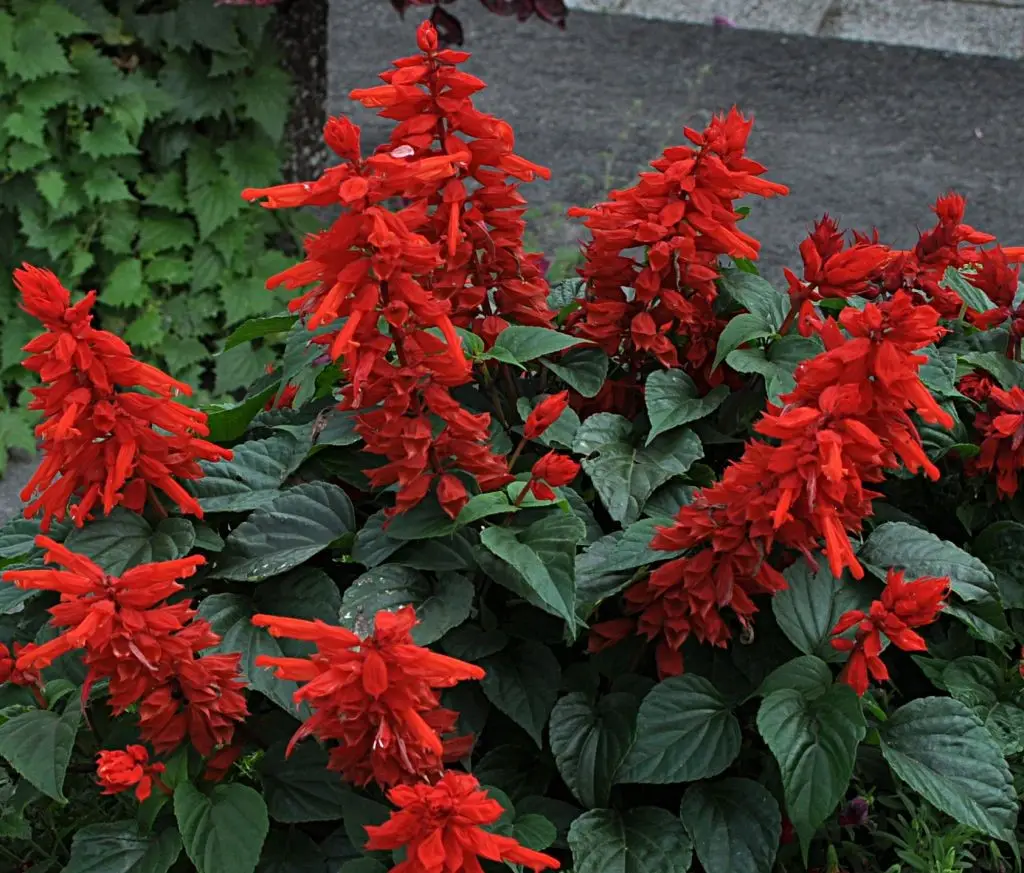
Temperature Tolerance: 70°F to 90°F
Planting Dates: April to June
With numerous species and varieties, salvias provide reliable summer color:
- Space plants 12-24 inches apart depending on variety
- Plant in full sun and well-draining soil
- Water at the base rather than overhead to prevent disease
- Choose from annual varieties like ‘Vista’ series or perennial types like ‘Hot Lips’ or ‘Black and Blue’
- Deadhead spent blooms to encourage continuous flowering
Hummingbird Haven: The tubular flowers of salvias are particularly attractive to hummingbirds, bringing these delightful visitors to your garden.
8. Portulaca (Moss Rose)

Temperature Tolerance: 70°F to 100°F
Planting Dates: March through June
This low-growing succulent thrives in hot, dry conditions:
- Plant in full sun and sandy, well-draining soil
- Space plants 6-8 inches apart
- Water sparingly; portulaca is extremely drought-tolerant
- Use in rock gardens, border edges, or hanging baskets
- Look for modern varieties like the ‘Sundial’ or ‘Happy Hour’ series with larger, more abundant blooms
Water-Wise Choice: Few flowering plants can match portulaca’s drought tolerance, making it perfect for xeriscaping or low-water gardens.
9. Cosmos
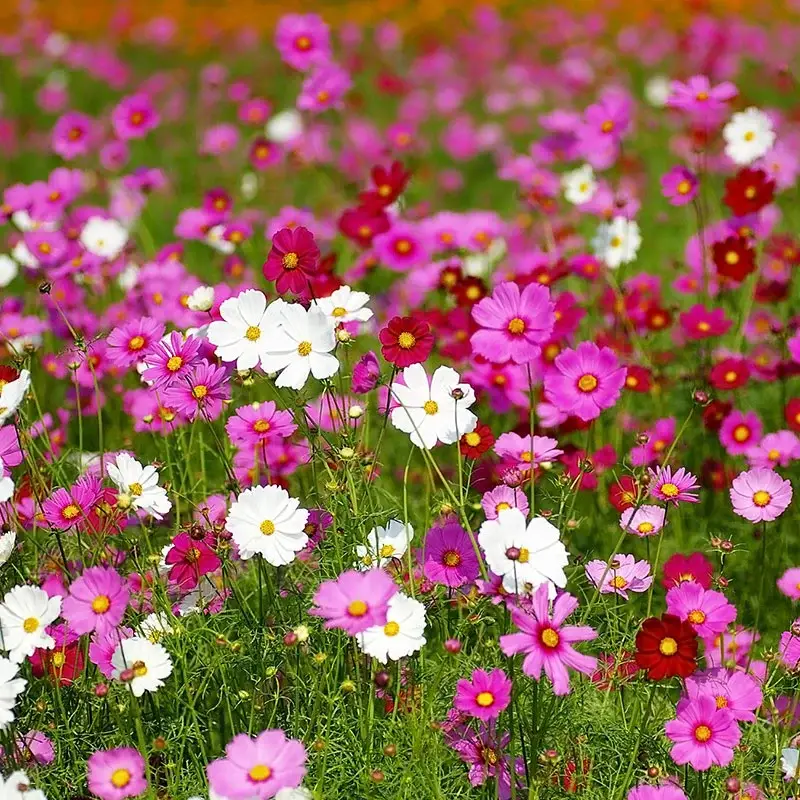
Temperature Tolerance: 70°F to 90°F
Planting Dates: Mid-April through June
These airy, daisy-like flowers add movement and charm to summer gardens:
- Direct sow seeds ¼ inch deep and 12-18 inches apart
- Thin seedlings to 12-24 inches apart when they reach 2-3 inches tall
- Plant in full sun and average soil (overly rich soil reduces flowering)
- Water moderately; cosmos are somewhat drought-tolerant once established
- Choose from tall varieties (3-5 feet) or dwarf types (12-18 inches)
Self-Seeding Benefit: Cosmos often self-seed moderately, providing free plants for next season without becoming invasive.
10. Coleus

Temperature Tolerance: 70°F to 85°F
Planting Dates: March through June
Grown for its vibrant foliage rather than flowers, coleus provides reliable color in shade:
- Space plants 12-18 inches apart depending on variety
- Plant in partial shade to full shade (sun-tolerant varieties are available)
- Keep soil consistently moist but not waterlogged
- Pinch growing tips to encourage branching
- Remove flower spikes to maintain energy for foliage production
Design Tip: With hundreds of varieties available in countless color combinations, coleus can be used to echo or complement the colors of nearby flowering plants.
Herbs To Plant in June
These herbs thrive when planted in June in Zone 10, providing fresh flavors throughout the season:
1. Basil
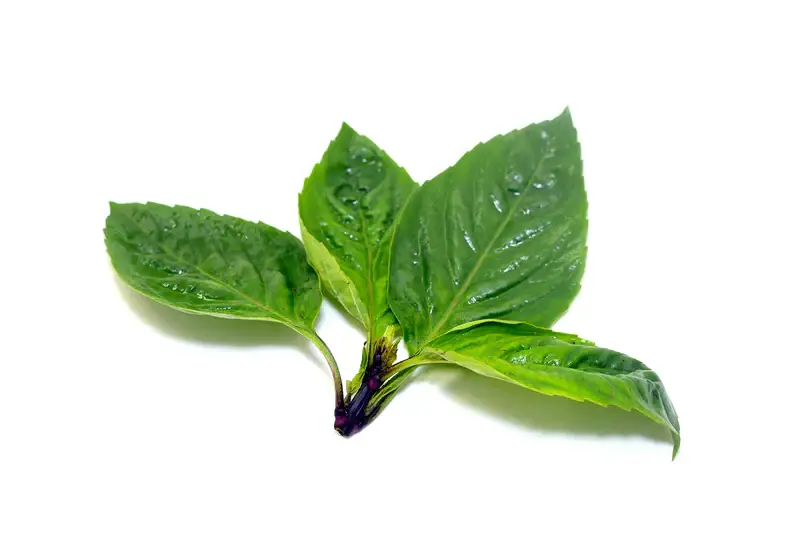
Temperature Tolerance: 70°F to 90°F
Planting Dates: March through June
This aromatic herb is a summer garden essential:
- Space plants 12-18 inches apart in rich, well-draining soil
- Plant in full sun with afternoon shade in the hottest locations
- Water consistently, keeping soil evenly moist
- Pinch flower buds to extend leaf production
- Harvest regularly by taking stem tips to encourage branching
Variety Exploration: Beyond sweet basil, try Thai basil (anise flavor), ‘Dark Opal’ (purple leaves), or ‘Spicy Globe’ (compact growth) for culinary diversity.
2. Oregano
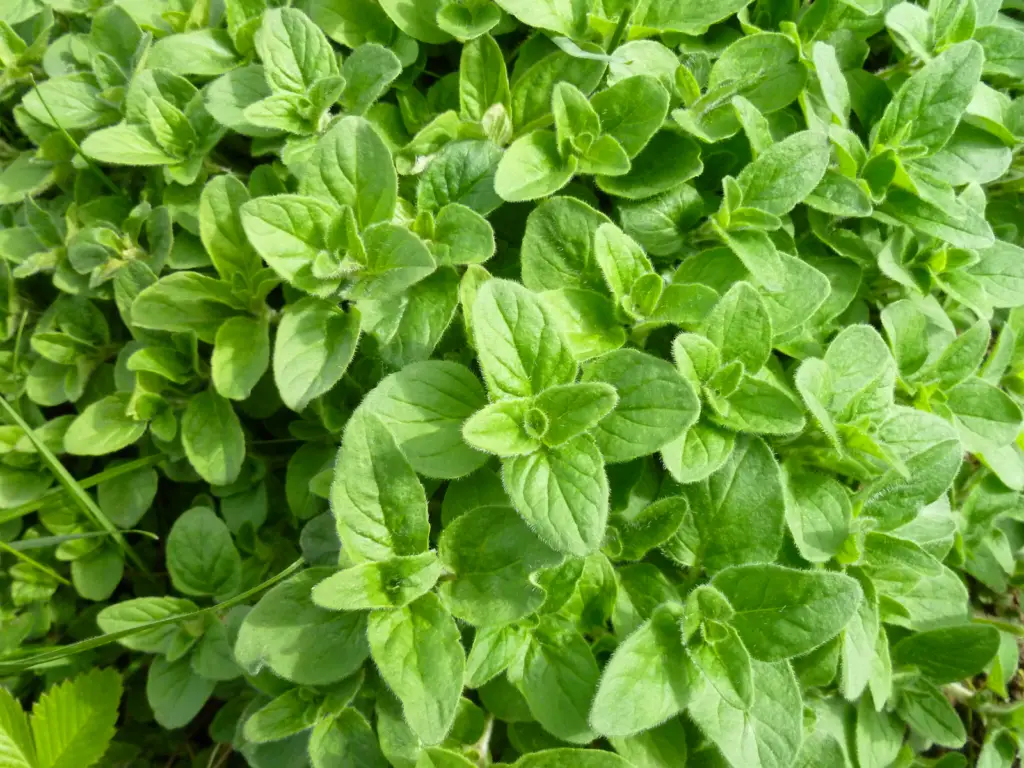
Temperature Tolerance: 70°F to 90°F
Planting Dates: April to June
This Mediterranean herb thrives in Zone 10’s warm, dry conditions:
- Space plants 12-18 inches apart in well-draining soil
- Plant in full sun for best flavor development
- Water sparingly; oregano prefers drier conditions
- Harvest just before flowering for maximum flavor
- Trim regularly to prevent woody growth
Culinary Note: Greek oregano (Origanum vulgare hirtum) offers the most intense flavor for Mediterranean cooking.
3. Rosemary

Temperature Tolerance: 70°F to 85°F (tolerates higher temperatures)
Planting Dates: March through June
This woody, aromatic herb is perfect for Zone 10’s climate:
- Space plants 2-3 feet apart in well-draining, slightly alkaline soil
- Plant in full sun for best growth and oil production
- Water deeply but infrequently once established
- Choose upright varieties like ‘Tuscan Blue’ for hedges or prostrate types like ‘Prostratus’ for groundcover
- Harvest sprigs any time after the plant is established
Landscaping Value: Beyond its culinary uses, rosemary makes an excellent drought-tolerant ornamental shrub or informal hedge.
4. Sage
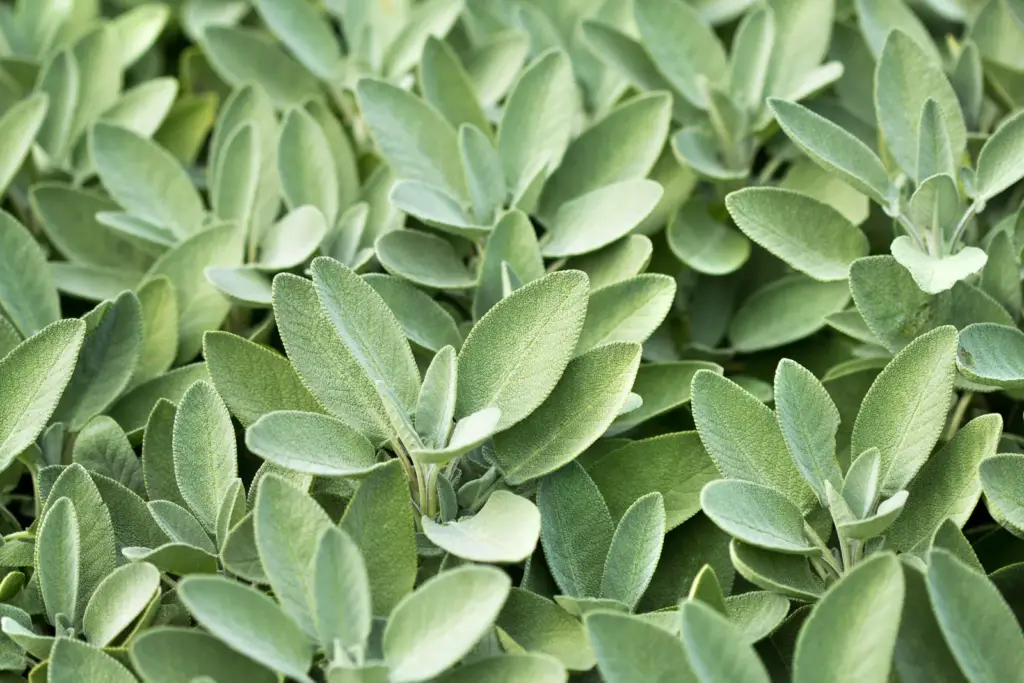
Temperature Tolerance: 70°F to 85°F
Planting Dates: March through June
This savory perennial herb offers both culinary and ornamental value:
- Space plants 18-24 inches apart in well-draining soil
- Plant in full sun with light afternoon shade in the hottest locations
- Allow soil to dry between waterings
- Prune lightly after flowering to maintain shape
- Look beyond common sage to varieties like pineapple sage, purple sage, or tricolor sage for garden interest
Tip for Longevity: Replace plants every 3-4 years as they become woody and less productive.
5. Mint

Temperature Tolerance: 60°F to 75°F (tolerates higher temperatures with care)
Planting Dates: March through June
This vigorous herb comes in countless flavors and varieties:
- Plant in containers to control spreading
- Provide partial shade in hot locations
- Keep soil consistently moist
- Harvest regularly to encourage fresh growth
- Try varieties beyond peppermint and spearmint: chocolate mint, apple mint, or pineapple mint offer unique flavors
Container Tip: Use a deep pot at least 12 inches in diameter for mint, as shallow containers dry out quickly in summer heat.
6. Cilantro
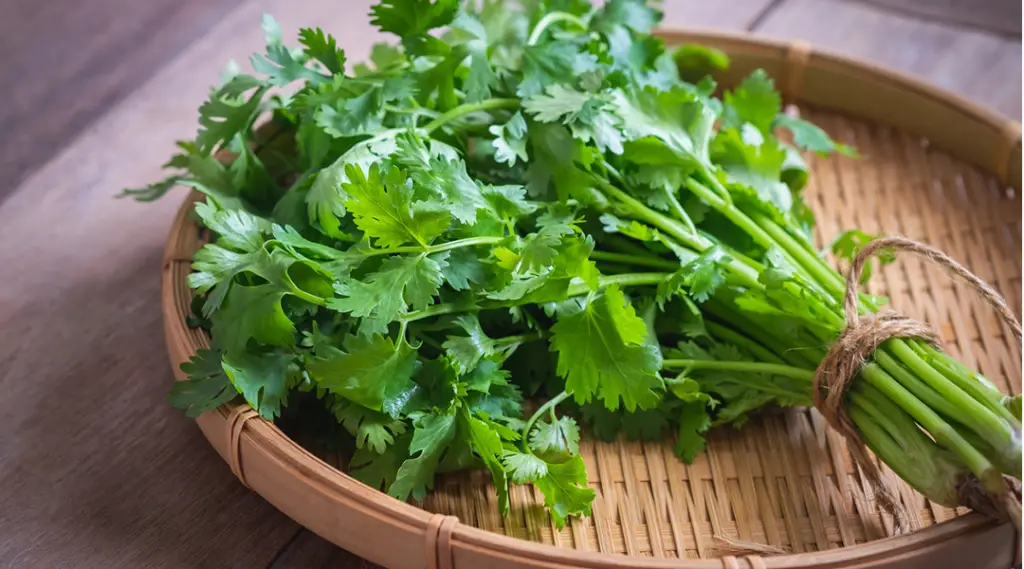
Temperature Tolerance: 50°F to 75°F (prefers cooler temperatures)
Planting Dates: June (with afternoon shade and regular watering)
While cilantro prefers cooler weather, special care allows June planting:
- Direct sow seeds ¼ inch deep and 6-8 inches apart
- Provide afternoon shade or plant on the north side of taller crops
- Keep soil consistently moist
- Succession plant every 2-3 weeks for continuous harvest
- Consider slow-bolting varieties like ‘Santo’ or ‘Leisure’
Dual Harvest: When cilantro eventually bolts in the heat, allow it to flower for beneficial insects, then collect the seeds (coriander) for spice.
7. Thyme

Temperature Tolerance: 70°F to 80°F
Planting Dates: April to June
This low-growing herb is perfect for hot, dry conditions:
- Space plants 12-15 inches apart in lean, well-draining soil
- Plant in full sun for best flavor development
- Water sparingly once established
- Choose from varieties like common thyme, lemon thyme, or creeping thyme
- Trim after flowering to prevent woody growth
Rock Garden Favorite: Thyme’s drought tolerance and attractive growth habit make it perfect for rock gardens and between stepping stones.
8. Chives
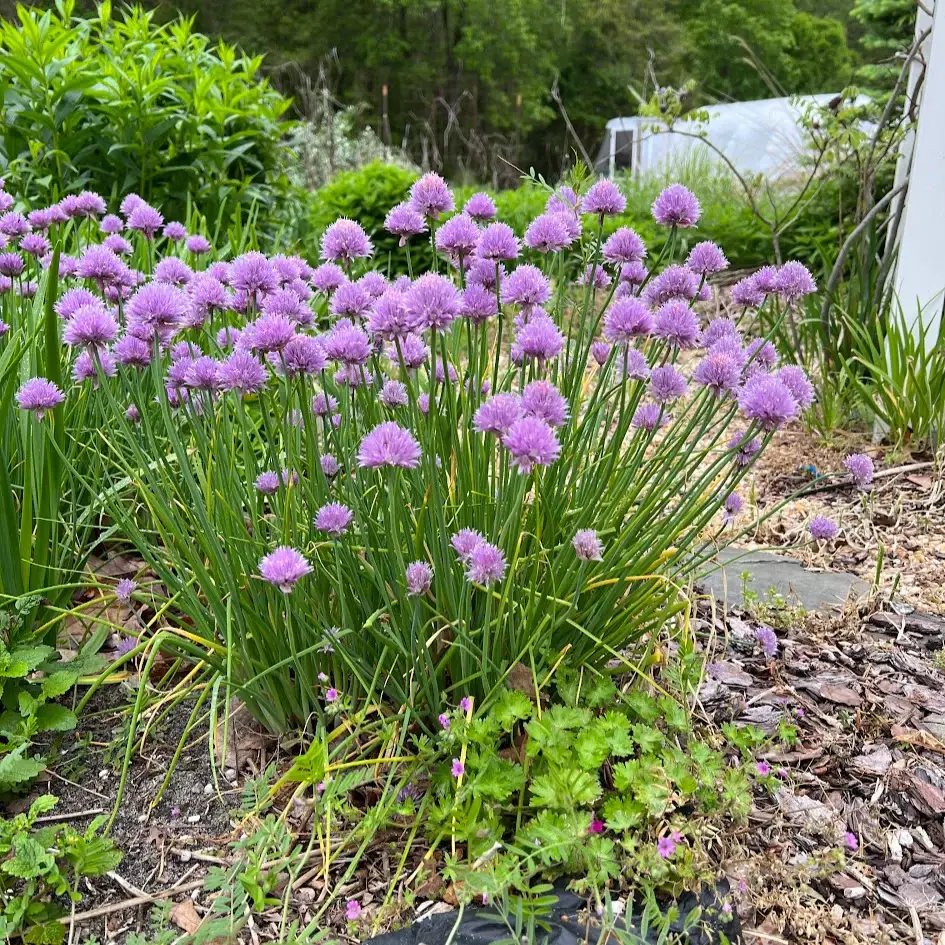
Temperature Tolerance: 65°F to 75°F (tolerates higher temperatures with afternoon shade)
Planting Dates: March to June
These mild onion-flavored perennials add vertical interest to herb gardens:
- Space plants 12 inches apart in rich, well-draining soil
- Plant in full sun to light shade
- Keep soil consistently moist but not waterlogged
- Harvest by cutting leaves 2 inches above soil level
- Divide clumps every 3-4 years to maintain vigor
Pollinator Benefit: Allow some plants to flower to attract beneficial insects; the edible blossoms also make attractive garnishes.
9. Dill

Temperature Tolerance: 60°F to 75°F (tolerates warmer temperatures)
Planting Dates: March through June
This feathery annual herb is quick-growing in warm weather:
- Direct sow seeds ¼ inch deep and 12 inches apart
- Thin seedlings to 12-18 inches apart
- Plant in full sun with afternoon shade in the hottest locations
- Keep soil consistently moist during germination and early growth
- Succession plant every 3-4 weeks for continuous harvest
Butterfly Garden Addition: Dill is a host plant for swallowtail butterfly caterpillars, adding wildlife value to your garden.
10. Tarragon

Temperature Tolerance: 70°F to 85°F
Planting Dates: April to June
This culinary herb offers distinctive anise-like flavor:
- Space plants 18-24 inches apart in well-draining soil
- Plant French tarragon (Artemisia dracunculus) for best flavor (note: it doesn’t come true from seed)
- Provide partial afternoon shade in hot locations
- Water moderately, allowing soil to dry slightly between waterings
- Harvest leaves regularly to encourage fresh growth
Growth Note: French tarragon rarely flowers in warm climates, focusing its energy on leaf production instead.
Landscape Plants To Plant in June
Enhance your Zone 10 landscape with these stunning ornamental plants that establish well when planted in June:
1. Agapanthus (Lily of the Nile)
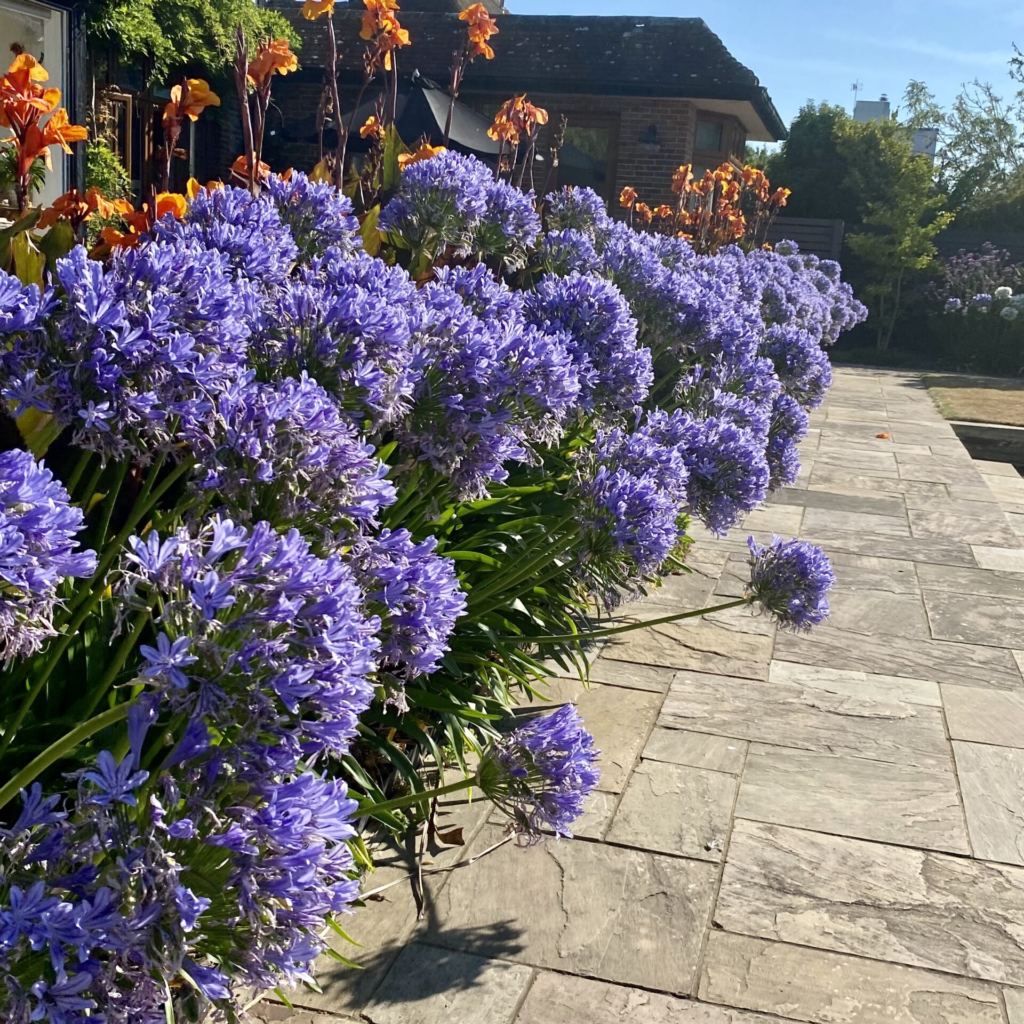
Temperature Tolerance: 70°F to 90°F
Planting Dates: April to June
These striking perennials produce dramatic spherical flower clusters:
- Space plants 12-18 inches apart for individual specimens, 8-12 inches for mass plantings
- Plant in full sun to light shade in well-draining soil
- Water regularly when establishing, then moderately once established
- Choose from varieties with blue, white, or purple flowers
- Divide clumps every 4-6 years to maintain vigor
Design Use: Plant in drifts for maximum impact, or use as specimen plants in containers.
2. Hibiscus
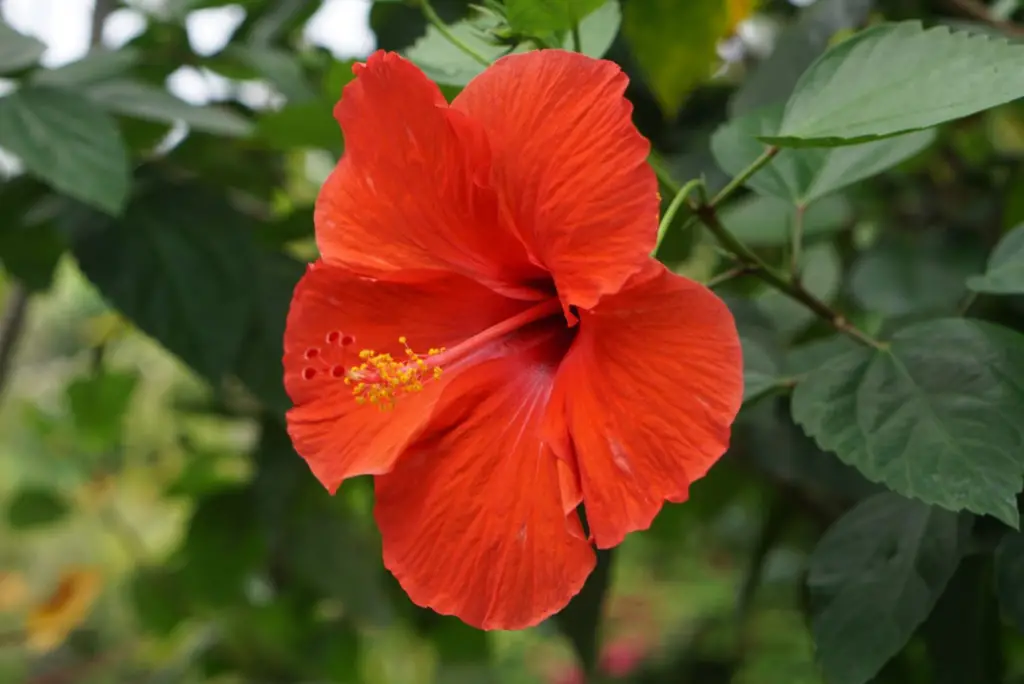
Temperature Tolerance: 70°F to 95°F
Planting Dates: April to June
These tropical beauties offer spectacular blooms in Zone 10:
- Space tropical hibiscus 3-6 feet apart and hardy hibiscus 2-3 feet apart
- Plant in full sun to light shade in rich, well-draining soil
- Keep soil consistently moist, especially during hot periods
- Apply a 2-3 inch layer of organic mulch to maintain soil moisture
- Choose from tropical hibiscus (Hibiscus rosa-sinensis) for evergreen shrubs or hardy hibiscus (H. moscheutos) for herbaceous perennials
Variety Selection: Hundreds of cultivars offer flowers in nearly every color from white to deep red, including multicolored varieties.
3. Bird of Paradise (Strelitzia reginae)
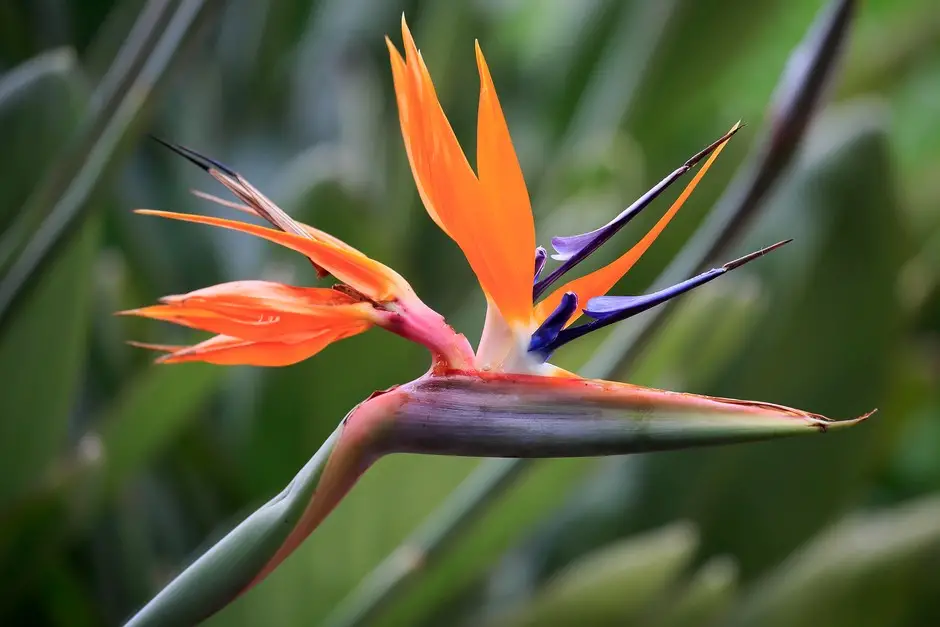
Temperature Tolerance: 70°F to 100°F
Planting Dates: April to June
This iconic tropical plant creates dramatic architectural interest:
- Space plants 4-5 feet apart in well-draining soil
- Plant in full sun for best flowering
- Water deeply but allow soil to dry slightly between waterings
- Fertilize with phosphorus-rich fertilizer to encourage blooming
- Be patient—plants may take 3-5 years to begin flowering
Landscape Impact: Use as a focal point in tropical-themed gardens or mass for dramatic borders.
4. Jasmine

Temperature Tolerance: 70°F to 95°F
Planting Dates: April to June
These fragrant flowering vines or shrubs add sensory appeal to gardens:
- Space plants according to variety (3-6 feet for vines, 2-3 feet for shrubs)
- Plant in well-draining soil with organic matter
- Provide support for climbing varieties
- Choose from star jasmine (Trachelospermum), Arabian jasmine (Jasminum sambac), or downy jasmine (J. multiflorum)
- Prune after flowering to maintain shape and control size
Fragrance Garden Essential: Plant near windows, patios, or garden seating areas to enjoy the intoxicating scent.
5. Lavender

Temperature Tolerance: 70°F to 85°F
Planting Dates: April to June
While challenging in humid areas, certain lavender varieties can succeed in Zone 10:
- Space plants 2-3 feet apart in very well-draining soil
- Plant in full sun on slightly raised beds for better drainage
- Water deeply but infrequently once established
- Choose heat-tolerant varieties like Spanish lavender (Lavandula stoechas) or fringed lavender (L. dentata)
- Prune lightly after flowering to maintain shape
Mediterranean Garden Component: Combine with other drought-tolerant plants like rosemary and sage for a water-wise garden bed.
6. Oleander
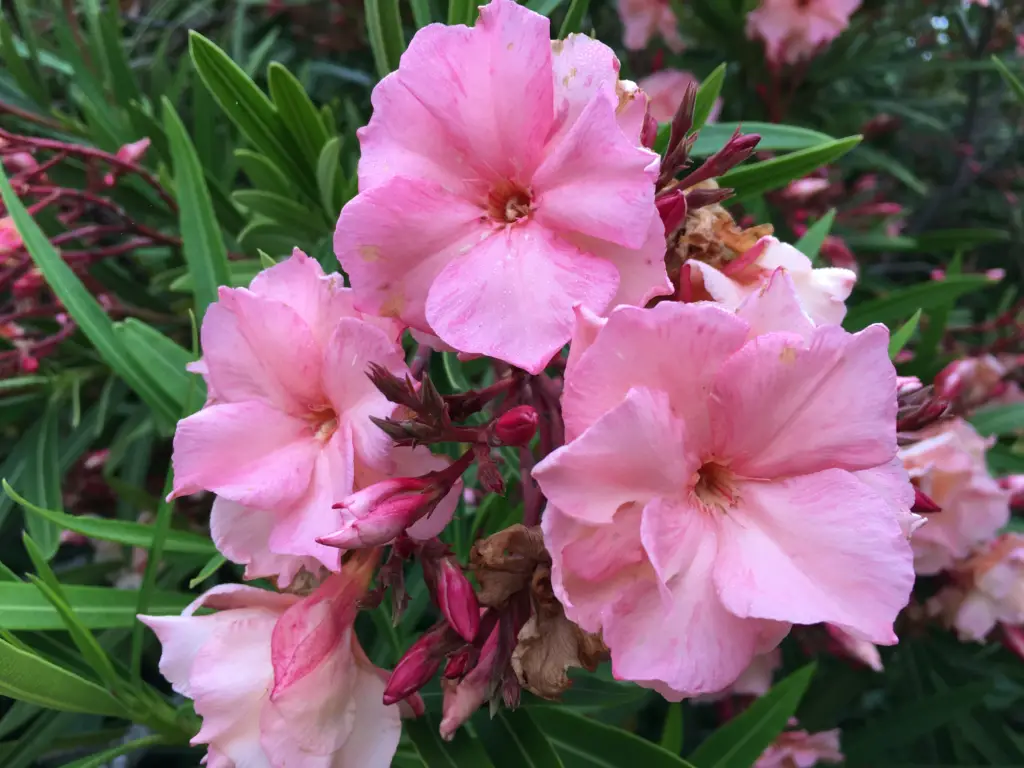
Temperature Tolerance: 70°F to 100°F+
Planting Dates: April to June
These drought-tolerant flowering shrubs thrive in Zone 10’s heat:
- Space plants 6-10 feet apart (they grow quickly in ideal conditions)
- Plant in full sun and well-draining soil
- Water regularly when establishing, then only during extended dry periods
- Choose dwarf varieties (3-5 feet) for smaller spaces or standard types (8-12 feet) for screening
- Prune in late winter to maintain shape and size
Important Safety Note: All parts of oleander are highly toxic if ingested; use caution when planting where children or pets have access.
7. Plumeria
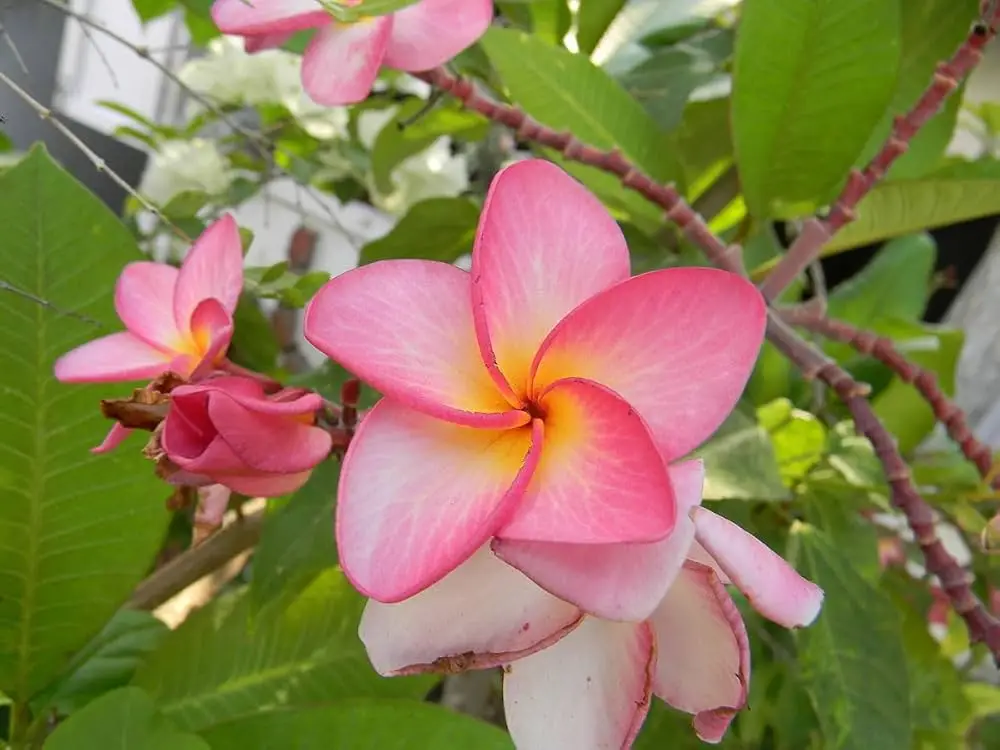
Temperature Tolerance: 70°F to 90°F
Planting Dates: April to June
These tropical trees produce the flowers used in Hawaiian leis:
- Space plants 10-15 feet apart (they can reach 15-20 feet tall and wide)
- Plant in full sun and very well-draining soil
- Water moderately, allowing soil to dry between waterings
- Choose from dozens of varieties with flowers in white, yellow, pink, red, or multicolors
- Fertilize with high-phosphorus fertilizer during growing season
Fragrance Garden Star: Few plants can match plumeria’s intoxicating tropical fragrance on warm summer evenings.
8. Croton
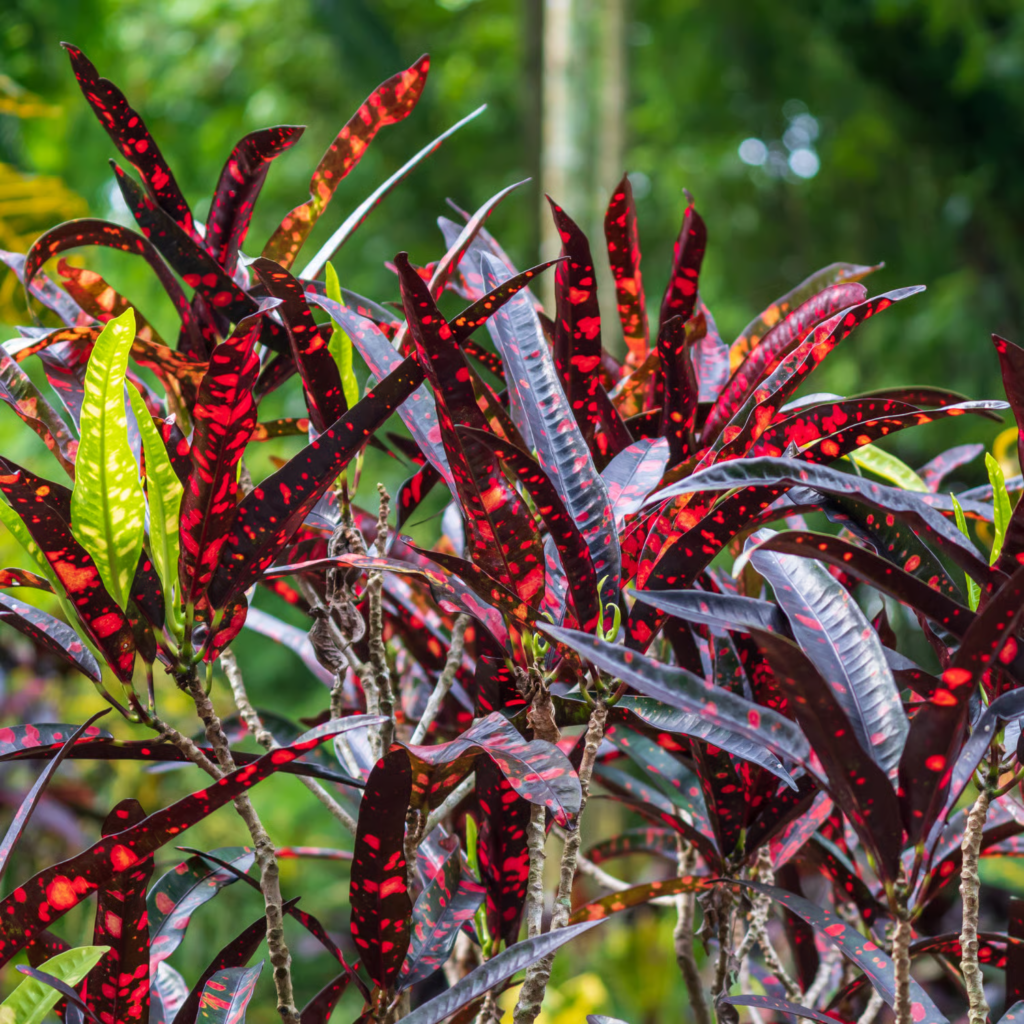
Temperature Tolerance: 70°F to 90°F
Planting Dates: April to June
These tropical shrubs offer spectacular multicolored foliage:
- Space plants 3-4 feet apart in well-draining soil
- Plant in full sun to partial shade (more sun typically means more vibrant colors)
- Keep soil consistently moist but not waterlogged
- Choose from varieties with narrow or broad leaves in various color patterns
- Protect from strong winds which can damage large leaves
Color Impact: Few plants offer the vibrant year-round color display of crotons, with leaves in shades of yellow, orange, red, green, and purple.
9. Bougainvillea

Temperature Tolerance: 70°F to 100°F
Planting Dates: April to June
These spectacular flowering vines create cascades of vibrant color:
- Space plants 5-10 feet apart depending on variety
- Plant in full sun and very well-draining soil
- Water deeply but infrequently; drought stress often triggers better flowering
- Train on supports or allow to cascade over walls
- Prune after flowering cycles to control size and shape
Thornless Varieties: For child-friendly gardens, look for thornless cultivars like ‘Singapore Pink’ or ‘Miss Alice’.
10. Palms
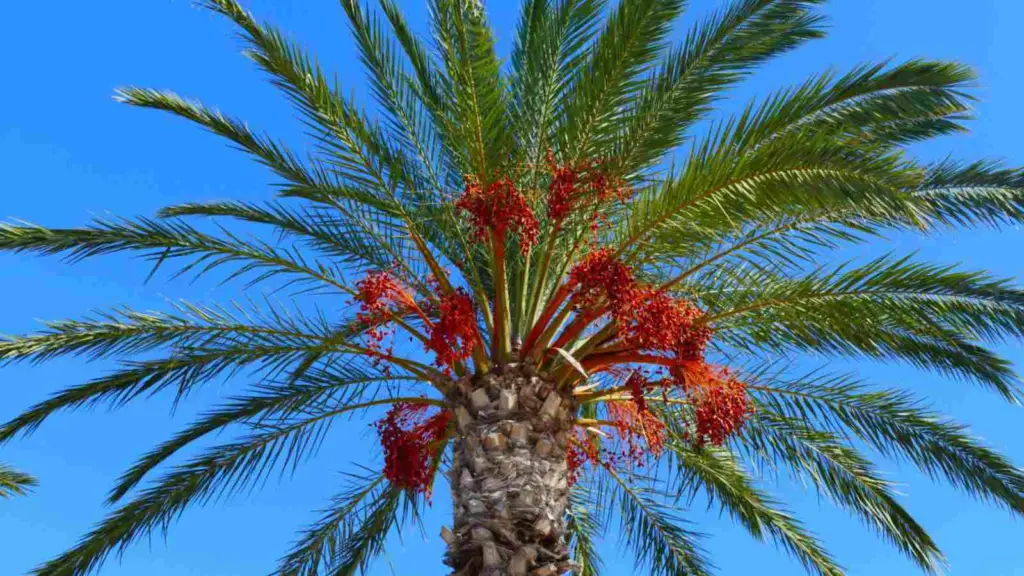
Temperature Tolerance: 70°F to 100°F (varies by species)
Planting Dates: April to June
These iconic tropical plants create instant architectural impact:
- Space according to species (6-20+ feet depending on mature size)
- Plant in well-draining soil amended with organic matter
- Water deeply and regularly when establishing
- Choose species suited to your specific conditions: Pygmy Date Palm for small spaces, King Palm for filtered shade, or Foxtail Palm for full sun
- Apply palm-specific fertilizer 2-3 times yearly
Design Versatility: From small accent palms to majestic specimens, these plants define the tropical and subtropical landscape.
Tips for Summer Planting Success in Zone 10
To ensure your June plantings thrive despite the summer heat:
Watering Strategies
- Water deeply and less frequently rather than shallowly and often to encourage deep root growth
- Apply water in the early morning to minimize evaporation and fungal disease
- Consider drip irrigation for efficient water delivery directly to plant roots
- Use moisture meters to avoid both over and under-watering
- Group plants with similar water needs together for efficient irrigation
Mulching Benefits
- Apply 2-3 inches of organic mulch around plants (keeping it away from stems)
- Replenish mulch as it decomposes to maintain soil temperature regulation
- Consider light-colored mulches in extremely hot areas to reflect heat
- Use coconut coir or pine straw for water retention in sandy soils
- Apply compost as mulch to improve soil quality as it breaks down
Shade Protection
- Provide afternoon shade for sensitive plants using shade cloth (30-50%)
- Plant tall crops like corn or sunflowers on the west side of heat-sensitive plants
- Use row covers to protect seedlings during establishment
- Consider temporary shade structures during extreme heat events
- Plant near existing trees for natural filtered light (being mindful of root competition)
Soil Care
- Add organic matter before planting to improve water retention and drainage
- Avoid disturbing soil during extreme heat to prevent moisture loss
- Consider using water-retaining polymers in container plantings
- Test soil pH and adjust according to plant needs
- Apply compost tea monthly to boost soil microorganism activity
Pest Management
- Monitor for pests regularly, as hot weather can increase insect populations
- Use lightweight row covers to protect vulnerable crops from insects
- Introduce beneficial insects like ladybugs and lacewings for natural pest control
- Apply organic pest controls in the evening to prevent leaf burn
- Remove severely infested plants promptly to prevent spread
Conclusion
June in Zone 10 offers exceptional opportunities for gardeners. By selecting the right plants and providing appropriate care, you can create a thriving garden landscape despite the summer heat. Focus on heat-loving varieties, proper watering techniques, and strategic planting locations to maximize success.
Whether you’re growing vegetables for your table, flowers for color and pollinators, herbs for culinary use, or landscape plants for long-term beauty, June planting in Zone 10 allows you to garden productively year-round. Embrace the unique advantages of your warm climate, and enjoy the abundance and beauty your garden can provide during the summer months and beyond.
Happy gardening!

